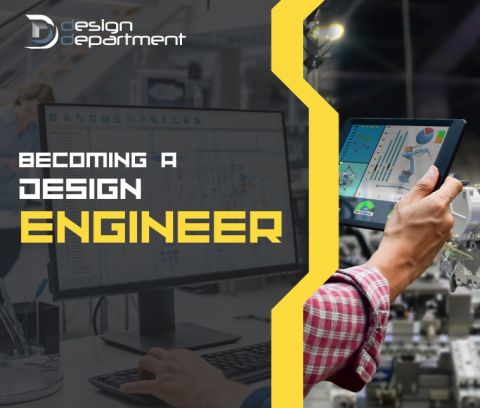The Path to Becoming a Design Engineer: Essential Steps to Take

If you have a passion for design and engineering, becoming a design engineer may be the perfect career path for you. This comprehensive guide will walk you through the essential steps you need to take to kickstart your journey in this exciting field. From acquiring the necessary education and skills to finding job opportunities, this guide has got you covered. So, if you're ready to dive into the world of design engineering, let's get started!
Understand the Role of a Design Engineer
Before embarking on your journey to become a design engineer, it's important to have a clear understanding of what the role entails. A design engineer is responsible for creating and developing innovative solutions to design problems. They work closely with clients, architects, and other professionals to bring ideas to life. Design engineers use their technical expertise and creativity to design products, structures, and systems that meet specific requirements and standards. By understanding the role of a design engineer, you can better prepare yourself for the challenges and opportunities that lie ahead in your career.
Obtain a Relevant Degree or Certification
One of the first steps to becoming a design engineer is to obtain a relevant degree or certification. Many employers require a minimum of a bachelor's degree in engineering or a related field. Some common degrees for design engineers include mechanical engineering, electrical engineering, and industrial design. It's important to choose a program that offers coursework and hands-on experience in design principles, computer-aided design (CAD) software, and engineering analysis. Additionally, obtaining certifications in specific design software or techniques can enhance your skills and make you more competitive in the job market. Consider researching and pursuing certifications such as Autodesk Certified Professional or SolidWorks Certified Associate. By obtaining a relevant degree or certification, you will gain the foundational knowledge and skills necessary to excel as a design engineer.
Gain Practical Experience Through Internships or Entry-Level Positions
In addition to obtaining a degree or certification, gaining practical experience through internships or entry-level positions is crucial for aspiring design engineers. This hands-on experience allows you to apply the knowledge and skills you have learned in a real-world setting. Look for internships or entry-level positions at engineering firms, manufacturing companies, or design studios. These opportunities will not only provide you with valuable experience but also allow you to network with professionals in the industry. During your internship or entry-level position, take the opportunity to learn from experienced engineers, ask questions, and take on challenging projects. This practical experience will not only enhance your skills but also make you more attractive to potential employers when you are ready to start your career as a design engineer.
Develop Strong Technical Skills and Knowledge
Developing strong technical skills and knowledge is essential for anyone aspiring to become a design engineer. This includes gaining a deep understanding of engineering principles, mathematics, and physics. It is important to excel in subjects such as calculus, mechanics, thermodynamics, and materials science. Additionally, familiarize yourself with computer-aided design (CAD) software, as it is widely used in the field of design engineering. Taking courses or participating in workshops that focus on CAD and other relevant software can greatly enhance your technical skills. Stay updated with the latest advancements in technology and industry trends by reading books, attending conferences, and joining professional organizations. By continuously improving your technical skills and knowledge, you will be better equipped to tackle complex design challenges and stand out in the competitive field of design engineering.
Build a Portfolio of Design Projects.
Building a portfolio of design projects is an essential step in becoming a successful design engineer. This portfolio will showcase your skills, creativity, and ability to solve design problems. Start by taking on small design projects, such as creating 3D models or designing product prototypes. As you gain experience, tackle more complex projects that demonstrate your ability to handle real-world design challenges. Document your design process, including sketches, calculations, and iterations, to show your problem-solving skills. Include both completed projects and works in progress in your portfolio to demonstrate your growth and potential.
Additionally, consider creating an online portfolio or website to showcase your work to potential employers or clients. Regularly update your portfolio with new projects and continuously seek feedback from mentors or professionals in the field to improve your designs. A strong portfolio will not only impress potential employers but also serve as a valuable tool for self-reflection and improvement as a design engineer.
